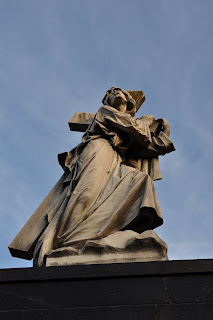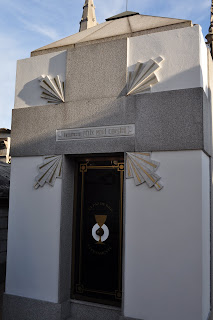Buenos Aires is a city full of beautiful architecture. During our stay, we walked almost everywhere we went and were constantly blown away by the detail and craftsmanship. City guides and tourist websites drew attention to some of them, but others received no fanfare or even a sign to tell their stories. You could walk the same streets everyday and see something new each time.
The apartment where we stayed for the month of August was located very near the center of the city. If you walked three to four blocks north from our front door you would see the Supreme Court Building:

Across a grassy plaza is the Teatro Colon, possibly the most famous building in Buenos Aires. It is considered to be one of the world's most important Opera Houses. Unfortunately it was closed for renovation.

If you continue north for another block you will see the Templo Libertad, a beautiful Jewish temple.
Note: Argentina is home to one of the world's largest Jewish populations.
A few blocks to the south of our apartment was Congreso, where the Avenida de Mayo ends into a beautiful park in front of the Congress building.
Note 2: Many things in Buenos Aires have "Mayo" in the name, because on May 25th 1810 Argentina declared independence from Spain.
On the other end of the Avenida de Mayo is the Plaza de Mayo, where you get a view of the Cabildo de Buenos Aires, which is the old government house. It was originally built in 1610, torn down and re-built in 1764 and has undergone significant changes over the years.

Also visible from the Plaza de Mayo is the Casa Rosada (Pink House). It is the Argentine equivalent of our White House, although the President actually lives off site.

The Metropolitan Cathedral of Buenos Aires is one of the other buildings surrounding the Plaza. It has twelve pillars (one for each of the Tribes of Israel) and above the pillars is a scene of Jacob re-uniting with Joseph in Egypt. General Jose de San Martin is also buried in a room connected to the church.
Note 3: Even though San Martin is the country's greatest hero (think Washington) he could not be buried in the church because he was a Mason.
But Churches and Government Buildings aren't the only places worthy of elaborate design. Check out the mall!
Outside:

Inside:

And finally, one of our favorite buildings in the city was the Palacio de la Aguas Corrientes. Which was designed in 1877, completed in 1894, and still performs it's original function. Any guesses? That's right, a water pumping station. Those in power at the time thought the old water tower was "unsightly", and they commissioned this one. Over a hundred years later it's still turning heads.


As always, if you click on a picture it will get bigger. Some of these buildings were hard to capture in one shot, so we will be posting more pictures of buildings and everything else on our Flickr page. Check in soon.
http://www.flickr.com/photos/40231079@N02/








































































